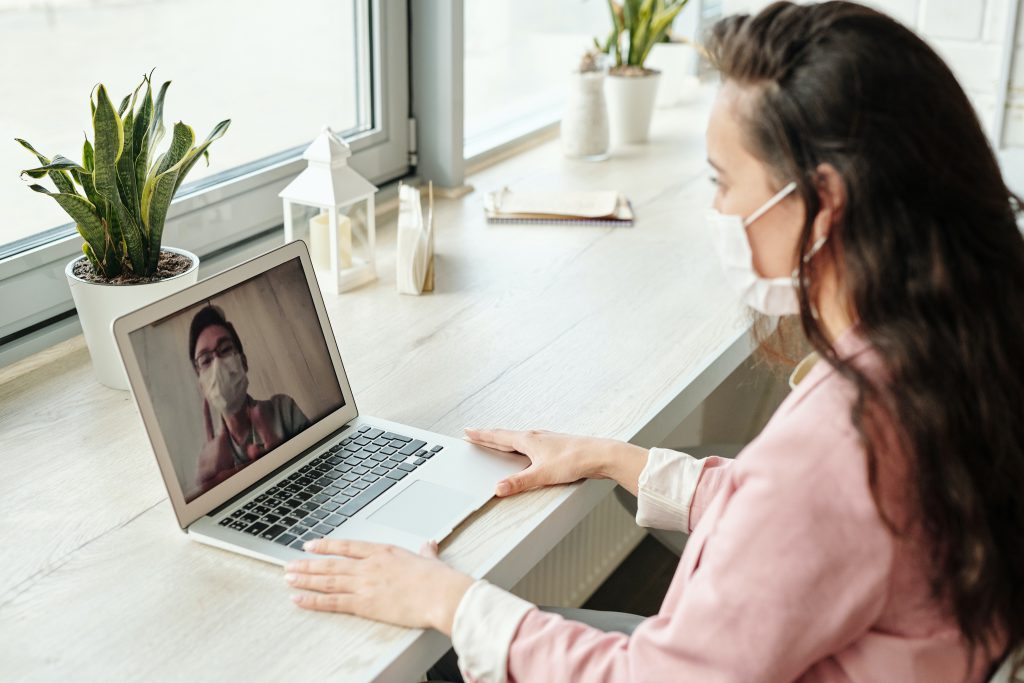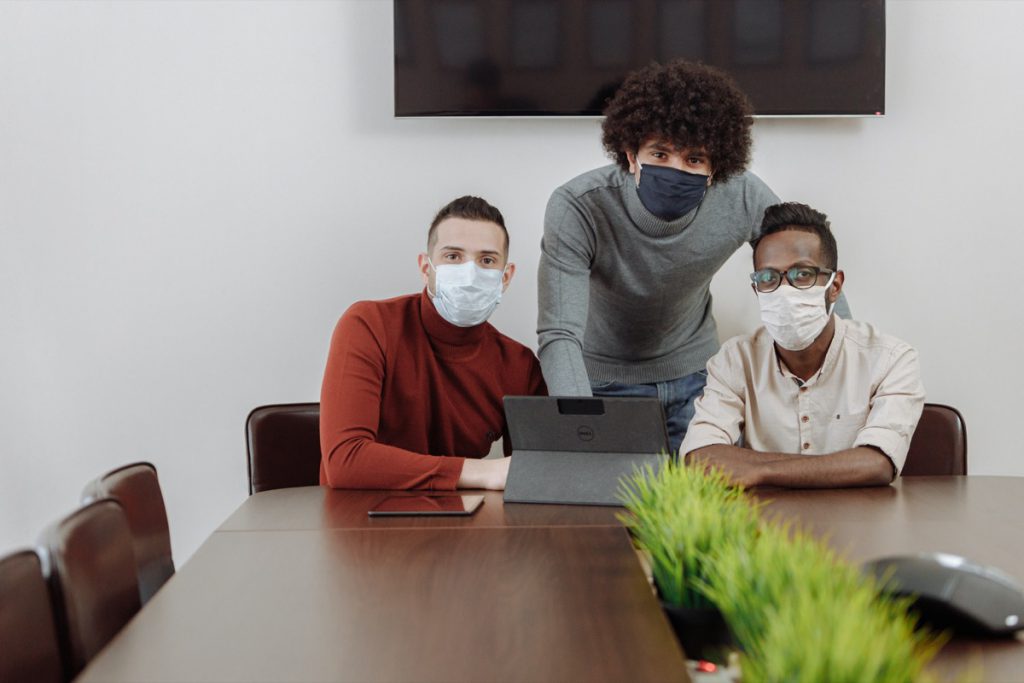8 Tips for Holding Union Meetings During the Pandemic

Ken Green
CEO/Founder
UnionTrack
Union meetings are important for keeping members engaged and the organization strong. But under the strict social distancing guidelines imposed to prevent the spread of COVID-19, it has been difficult for union leaders to bring their members together under one roof.
The solution for many unions, like the United Brotherhood of Carpenters and Joiners of America Local 290, has been to host virtual meetings. While going virtual was crucial for allowing everyone to stay connected when it was nearly impossible to gather, these meetings aren’t ideal for building stronger connections within the union.
“Live meetings are without a doubt more exciting, and Zoom can’t replace a crucial function of such gatherings – the fellowship of informal meetings in which union members from around a state or nation get to know each other one-on-one,” writes Don McIntosh, senior staff reporter for the Northwest Labor Press.
That’s why a return to in-person meetings is crucial for unions, especially at a time when leaders are working hard to protect workers from employers and legislators who have tried to take advantage of them during the pandemic.
These eight tips will help ensure everyone’s safety while still allowing leaders to host productive, morale-building meetings.
1. Consult Local Regulations
Gathering-size restrictions are in place around the country. The first thing to do before hosting any type of gathering during the pandemic is to check whether there are regulations regarding how many people you can call together.
These restrictions are typically set at the state level, with some regional and local differences depending on the infection rates. So, each union wanting to host an in-person union meeting needs to do their own research at each of those levels.
A good starting point would be a resource like Northstar Meeting Group’s state-by-state guide of COVID-related restrictions and meeting size limits.
2. Dictate Safety Measures, and Enforce Them
Regulations and common sense will also guide the development of safety measures to protect members who attend meetings. Social distancing will be an important element in meeting safety, so meeting leaders need to ensure the meeting space is set up to allow for it.
Wearing masks should be an across-the-board standard for any gatherings, and most states require such. If possible, meeting organizers can supply masks for those who forget to bring one. Leaders should also consider checking everyone’s temperature before they enter the building, as well as supplying hand sanitizer.
The safety measures need to be communicated to attendees before the meeting begins. The Brotherhood of Locomotive Engineers and Trainmen (BLET) Local 28 provides a good example of a short notice that puts members on alert for health and safety mandates.
Most importantly, those safety measures need to be enforced.

3. Have Attendees Sign COVID-19 Acknowledgements
Union meeting leaders may need to go one step beyond simply communicating safety measures to members. It may also be necessary to have meeting attendees sign COVID-19 safety acknowledgements. This is what the International Brotherhood of Electrical Workers (IBEW) Local 553 is doing for its meetings during the pandemic.
Having attendees sign such documents ensures that everyone is aware of the rules and the safety risks. It also helps to hold them accountable for their actions so they don’t put others at risk during the meeting.
While it may seem extreme for smaller union meetings, “such liability waivers are becoming popular in many industries unaccustomed to them,” says Elizabeth Tippet, associate professor at the University of Oregon School of Law.
4. Limit the Service of Refreshments
Hosting a meeting without refreshments may seem strange, but it’s a good policy to put in place to keep everyone distanced and safe. The elimination of food and drinks is one of the key policies that IBEW Local 292 enforced at their October general membership meeting. By doing away with the refreshments table, meeting organizers eliminate a common gathering spot where germs can easily spread.
If organizers insist on having food and drinks for members during the meeting, one option would be having individually boxed snacks distributed to place settings by individuals wearing masks and gloves before the meeting starts, suggests Rick Friedman, senior director of global real estate and workplace experience at Glassdoor. This would need to be done before attendees arrive at the meeting. The other option would be to allow attendees to bring their own refreshments.
5. Host Meetings in a Larger Space
Is the union hall large enough to host socially distant meetings? If not, meeting organizers may want to consider moving locations to a large space.
Weather permitting, outdoor spaces are a good option for a meeting space, as some research has shown that outside is safer than inside for gatherings, notes Erin Bromage, associate professor of biology at the University of Massachusetts-Dartmouth. The key reason is it is easier to ensure safe social distancing because people can be more easily spaced apart.
And that is key to hosting a meeting outside. Just because the meeting is in a more open space doesn’t mean safety protocols, like wearing masks and maintaining social distancing, can be tossed out. It just means it’s easier to enforce those rules when accommodating a large group.

6. Allow Socializing Within Safety Guidelines
Union meetings are a big part of relationship-building among members, which means socializing is an important element of these meetings. But socializing has been extremely restricted during the pandemic as a means to prevent the spread of the virus.
That doesn’t mean organizers have to completely do away with gathering before and after meetings. It just becomes that much more important to ensure members maintain distance and wear masks at all times.
To encourage proper distancing, meeting organizers can set up social areas that limit the number of people who can gather together. Within those areas, markers or chairs should be placed to keep members at least six feet apart from each other.
7. Clean Thoroughly Before and After Meetings
Cleanliness is crucial to hosting safe meetings. Don’t go to the extreme to get meetings spaces sufficiently clean, though. Basic cleaning products and protocols are effective at eliminating the virus.
“This virus is actually very sensitive to all the common cleaning and disinfecting agents out there, so that’s the good news,” says Karen Hoffman, clinical instructor in the Division of Infectious Diseases at the University of North Carolina School of Medicine.
To ensure a safe level of cleanliness, all high-touch areas in the meeting space need to be cleaned with proper cleaning products before and after a meeting. That includes dusting, notes the team at Robin, a workplace management company. “It’s tempting to focus solely on areas where hands or respiratory droplets may travel, but dust can be a vector for illnesses like COVID-19, cold, and flu,” writes the Robin team.
8. Host Hybrid Meetings
While the above tips will help create a safe space for a union meeting, there may be members who still don’t feel comfortable attending in person. To accommodate them, consider hosting a hybrid meeting, which would have both in-person and virtual attendees.
The key to hosting a successful hybrid meeting, says Ross Snyder, president of White Tie Productions, is facilitating two-way communication throughout the meeting. Using a video conferencing platform such as Zoom would allow full participation by virtual attendees whereas a tool like Facebook Live would allow feedback through written questions and answers in the comments section.
Either option would allow members to choose whether to physically attend the meeting, giving everyone the opportunity to participate.
When planning these meetings, organizers can use a tool like UnionTrack ENGAGE to poll members to keep them informed of meeting details and solicit their input as to how those meetings should take place.
Images by: Artem Maltsev, You X Ventures, Antenna







